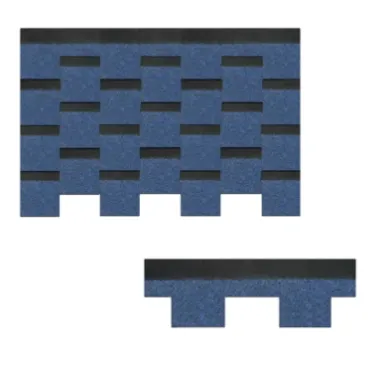
فبراير . 27, 2025 16:08 الرجوع للقائمة
Best Practices for Installing Architectural Shingles in Various Weather Conditions
Architectural shingles, including architectural asphalt shingles, architectural composite shingles, architectural dimensional shingles, and architectural fiberglass roof shingles, offer enhanced durability and style. However, proper installation under varying weather conditions is crucial to ensure performance and longevity. Here’s a detailed guide to best practices for installation across different climates and seasons.

Preparing for Installation of Architectural Asphalt Shingles in Hot Weather
Installing architectural asphalt shingles during high temperatures requires attention to prevent material damage.
-
Storage: Keep shingles in shaded areas to avoid warping from excessive heat.
-
Timing: Begin installation early in the morning or late afternoon to minimize exposure to extreme heat.
- Adhesion: Heat activates the adhesive strips on shingles, so handle them carefully to avoid sticking or misalignment.
Installing Architectural Composite Shingles in Cold Weather
For architectural composite shingles, low temperatures can make materials brittle and prone to cracking during installation.
-
Warming Materials: Store shingles in a heated area before installation to maintain flexibility.
-
Nail Application: Use additional nails to secure shingles against potential wind damage, as adhesives may not seal immediately in cold weather.
-
Sealant: Apply roofing sealant manually if the adhesive strip fails to activate in colder conditions.
Architectural Dimensional Shingle Installation in Rainy Conditions
While not ideal, rainy conditions sometimes necessitate the installation of architectural dimensional shingles with extra precautions.
-
Surface Prep: Ensure the roof deck is completely dry before installation to prevent mold growth and poor adhesion.
-
Underlayment: Use a waterproof underlayment to provide added protection against leaks.
-
Scheduling: Pause installation during heavy rain to maintain safety and ensure quality.
Architectural Fiberglass Roof Shingles and High Wind Installations
In areas prone to high winds, architectural fiberglass roof shingles must be secured with additional care.
-
Nail Placement: Use six nails per shingle instead of the standard four to improve wind resistance.
-
Adhesive Strength: Opt for high-strength adhesives specifically designed for extreme weather conditions.
-
Overlap: Maintain proper overlap and alignment to prevent shingles from lifting during storms.
General Weather-Proofing Tips for All Architectural Shingles
Regardless of the type, all shingles benefit from these universal installation practices:
-
Ventilation: Proper attic ventilation prevents moisture buildup and extends the life of shingles.
-
Inspection: Regularly check for loose or damaged shingles after installation, especially following severe weather.
- Professional Tools: Use specialized tools, such as pneumatic nail guns, for efficient and secure installation.
By following these tailored approaches, architectural asphalt shingles, composite shingles, dimensional shingles, and fiberglass roof shingles can be installed effectively in any weather condition. Ensure your roofing project withstands the elements while delivering exceptional performance and aesthetic appeal. Visit our website to explore premium roofing materials that meet your specific needs!
-
Sleek and Sturdy Flat Tiles
أخبارJul.31,2025
-
Revolutionary Stone Coated Metal Roof Tile A Superior Alternative
أخبارJul.31,2025
-
Innovative Reflective Granules for Roofing
أخبارJul.31,2025
-
Exceptional Asphalt Shingles for Roofing Excellence
أخبارJul.31,2025
-
Exceptional and Versatile 3-Tab Shingles
أخبارJul.31,2025
-
Charming and Practical Round Shingles
أخبارJul.31,2025







